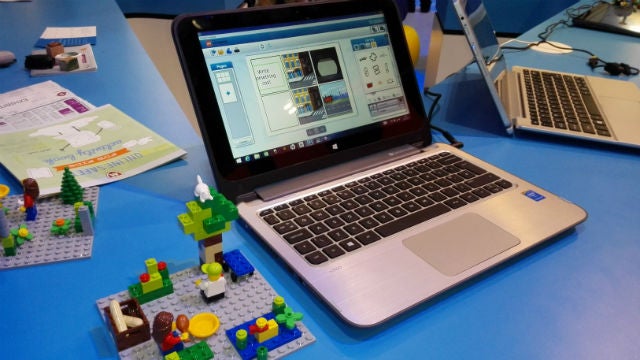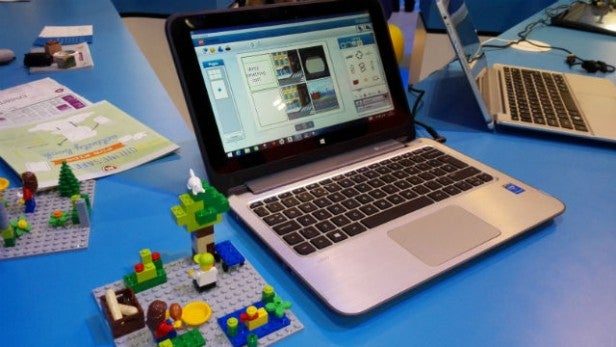Intel Education reveals super-portable Content Access Point at BETT 2015

Chip giant Intel hit the BETT 2015 education conference hard today, releasing a brand new product and showcasing loads more, including a charming little piece inspired by lego.
The fresh release cames in the form of the Intel Education Content Access Point, pictured above. As its name suggests, it’s been specifically built for use in schools, and is designed to store, manage and publish digital content, such as lesson plans. The company says that its primary qualities are ease-of-use and convenience, both for teachers and students.
The Content Access Point is targeted mainly at schools in developing countries with “low or intermittent connectivity”, and since it’s battery-powered, it works independently of mains power sources. Despite this, an Intel spokesperson revealed that it seems to have attracted the most interest in Europe.
Intel says that each unit, which runs an Intel Atom E3815 processor and 500GB of storage, is designed for use by a single teacher and can support up to 50 students. Its portability means that it can also be carried from classroom to classroom or even used to beam content to multiple devices during school trips.
“Technology can enrich lesson plans for teachers and really engage students,” said John Galvin, the vice president of the sales and marketing group at Intel Education. “But we need to make technology accessible to everyone. The Intel Education Content Access Point will fundamentally change the way schools can share learning materials and connect to the internet. We’ve worked closely with school IT administrators and teachers to build solutions they need to be successful.”

Elsewhere, the company highlighted its focus on the dubiously-named ‘three Rs’ of education – reading, writing and arithmetic, as well as cyber-wellness and coding, which it considers to be essential digital skills for students.
Read more: Intel Curie is a button-sized computer for wearables
One of the products that stuck out (pictured above) is designed to help youngsters improve their writing, and has been built in partnership with lego. By playing with the physical models and interacting with a series of on-screen images, Intel reckons that students will be inspired to take their writing to the next level.


